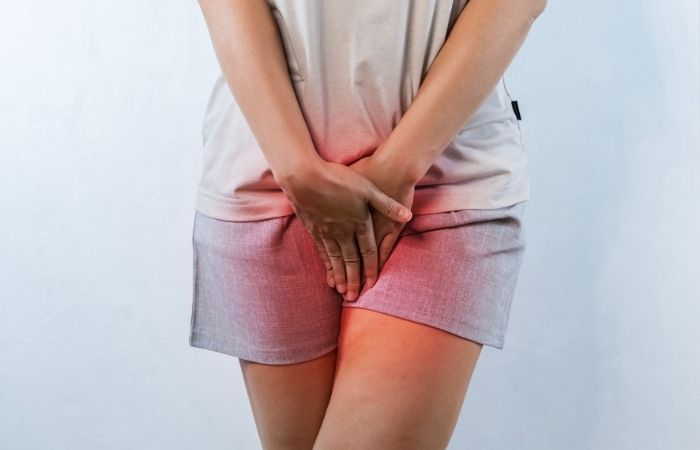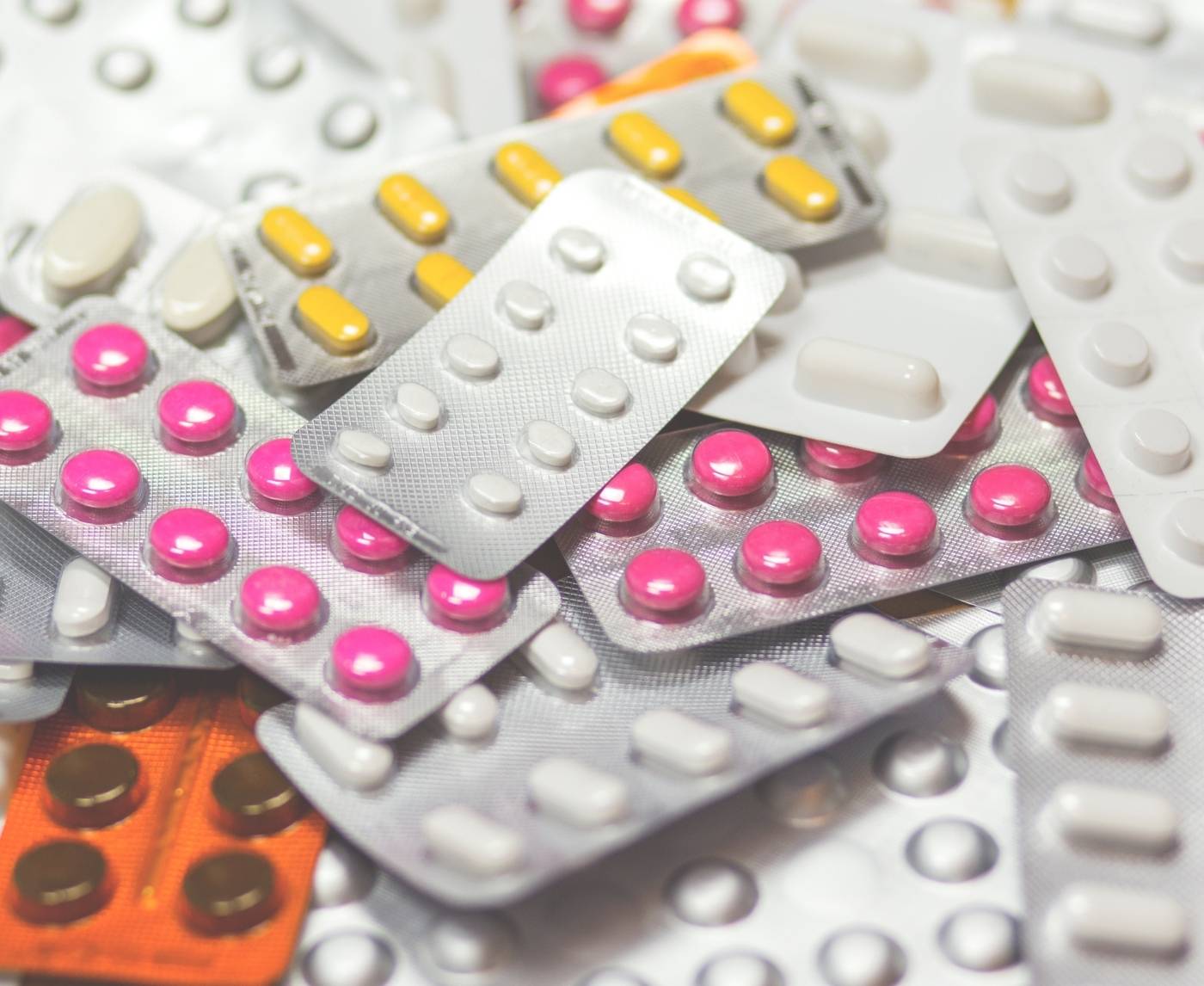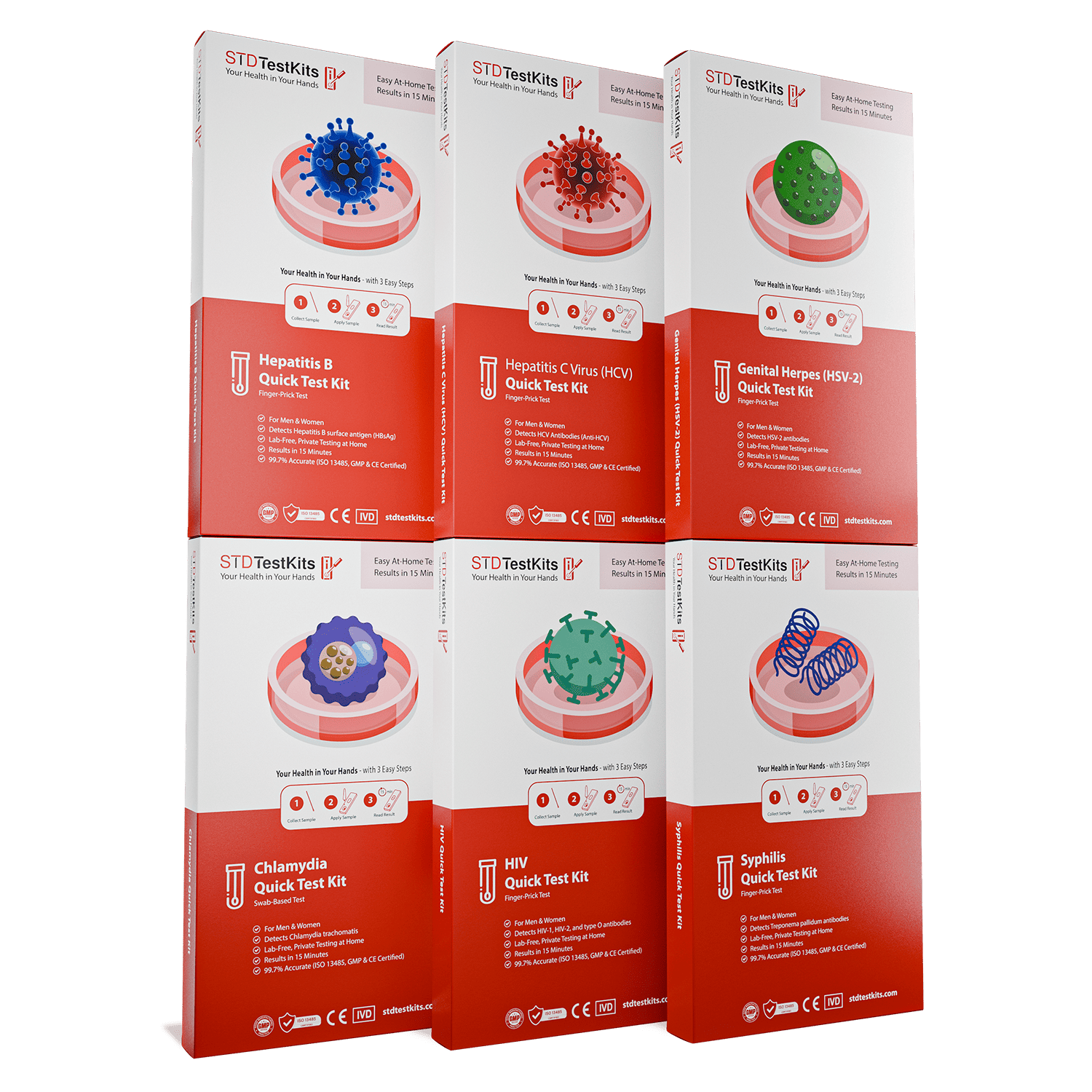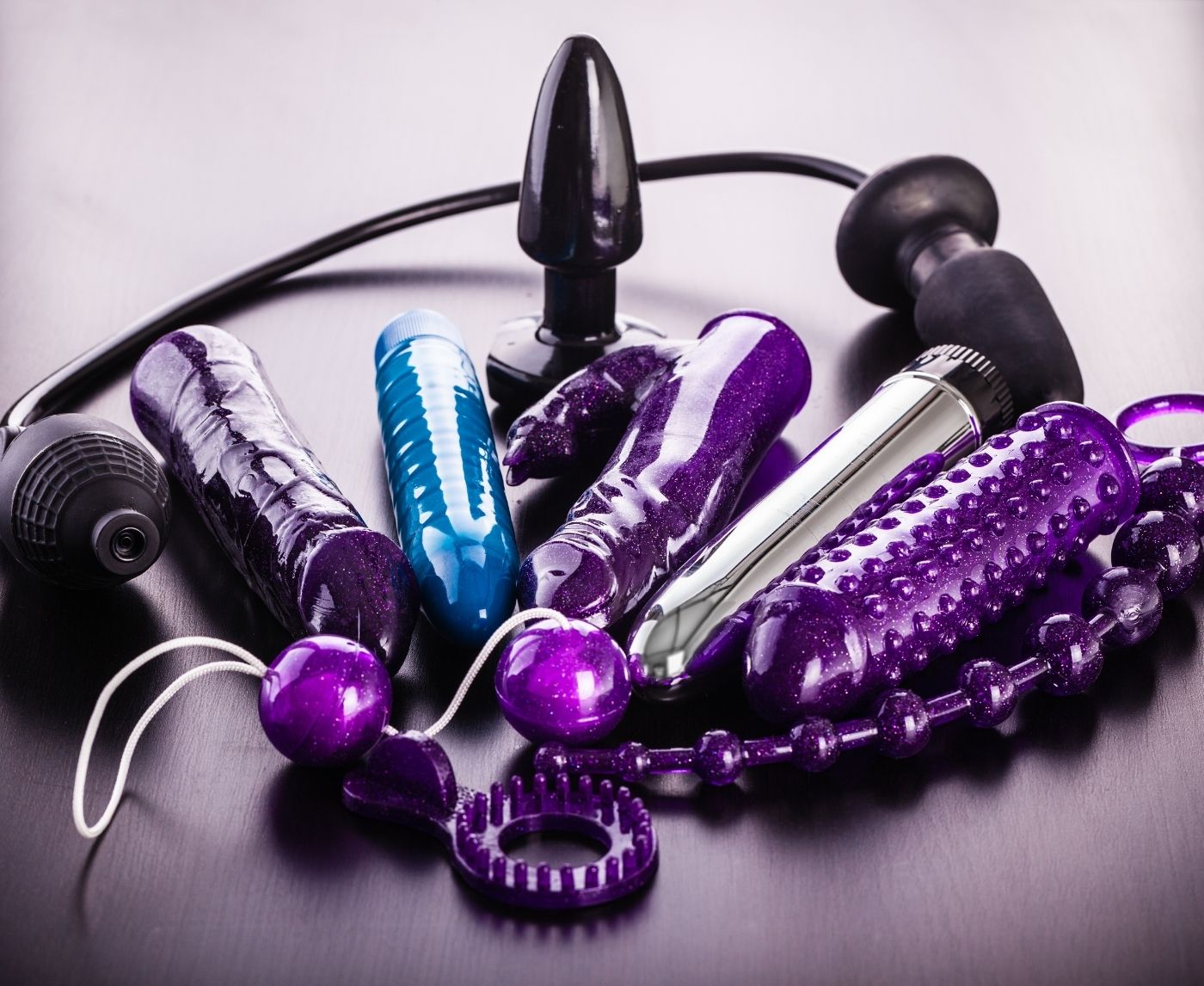Can You Get an STD from Oral or Toys? These Kits Can Tell You
Quick Answer: Antibiotics can disrupt the vaginal microbiome, leading to yeast infections, BV, and increased risk for STDs like Trichomoniasis, Herpes, and even HIV. You can restore balance with probiotics, STD testing, and timing your treatment smartly.
Why Antibiotics Mess With Your Vaginal Flora
It starts with something small. A throat infection. A sinus flare-up. A UTI. Your doctor hands you a prescription for antibiotics, and within a few days, you feel relief, except something shifts down there. You start noticing a sour smell. An itch that wasn’t there before. Discharge that feels... off. You wonder if it's a yeast infection, BV, or even something more serious like an STD. And if you've been here before, you already know what's coming: another round of confusion, shame, and maybe another trip to the clinic.
Here’s what most people don’t get told: antibiotics don’t just kill the bad stuff, they wipe out your good bacteria too. And in your vagina, that balance is everything. When it breaks, you’re not just uncomfortable. You’re vulnerable. To itching. To infection. Even to increased STD risk.
Your vagina is a self-regulating ecosystem. It’s supposed to be acidic, guarded by armies of good bacteria, mostly Lactobacillus, that produce lactic acid and hydrogen peroxide. These create a hostile environment for invaders like Trichomonas vaginalis, Candida albicans, and even HIV. But antibiotics don’t know good from bad. When you take them, especially broad-spectrum ones like amoxicillin or ciprofloxacin, they kill off everything in sight.
According to a study published in the journal Frontiers in Cellular and Infection Microbiology, antibiotic-induced disruption of vaginal flora often leads to lower Lactobacillus levels. This shift opens the floodgates for yeast overgrowth or opportunistic bacterial invaders like Gardnerella (the bacteria behind BV). The problem? Both conditions can mimic or mask symptoms of real STDs.

People are also reading: Can You Get Hepatitis B From Oral Sex? Yes, and Here’s How.
“I Took Antibiotics and Now I’m Itchy, Do I Have an STD?”
Tyra, 27, had just finished a 7-day course of antibiotics for strep throat when she noticed the first symptom: an itch deep inside her vaginal canal that no amount of water or cranberry juice could fix.
“I assumed it was a yeast infection, but when the over-the-counter treatment didn’t work, I started spiraling, was it something else? An STD I missed?”
Tyra tested negative for STDs, but she did have a raging case of antibiotic-associated BV. This is more common than most people think, studies show up to 30% of women develop BV or yeast within a week of antibiotic use. And when you're already stressed or sexually active, your brain jumps straight to panic mode: “Did I catch something?”
This is where things get blurry. BV and yeast symptoms, itching, burning, discharge, can overlap with early signs of Chlamydia, Trichomoniasis, or even Herpes. And if you're taking antibiotics, those meds can temporarily suppress STD symptoms or skew test results.
That’s why timing your STD testing matters. If you’re unsure whether your symptoms are from antibiotics or something more serious, it’s smart to test once the course is done and your body has stabilized.
When the vaginal microbiome is compromised, your natural defense system weakens. Here's what that means in practical terms, these infections are more likely to take hold or re-emerge:
Table 1. How antibiotics can increase the risk for various infections by damaging the protective vaginal ecosystem.
Can You Take an STD Test While on Antibiotics?
Technically, yes. But depending on the antibiotic and the STD, results may be skewed. For instance, if you’ve unknowingly taken a drug that partially treats Chlamydia or Gonorrhea (like doxycycline or azithromycin), your test could come back falsely negative while still harboring infection in tissues.
Additionally, if you’ve been treating something else (like a UTI) with a broad-spectrum antibiotic, your vaginal symptoms could be due to secondary infections, not an STD. This is why retesting after treatment is often essential, especially if you’re sexually active or your symptoms don’t go away.
Need clarity fast? This combo STD home test kit checks for the most common infections and offers discreet results, ideal if you’ve recently taken antibiotics and want confirmation without the clinic wait.
How to Restore Your Vaginal Flora After Antibiotics
Your body starts to try to get back to normal as soon as you stop taking antibiotics, but it needs help. The flora in your gut and vagina are very similar. A hit to one often hurts the other. That's why people who have diarrhea or bloating after taking antibiotics often also notice discharge or itching in their private parts. The answer? Give the good bacteria food before the bad ones take over.
Begin with a good probiotic. Lactobacillus rhamnosus and Lactobacillus reuteri are two strains that have been shown to repopulate the vaginal canal when taken by mouth. You can also use vaginal inserts or suppositories, but make sure they are made for this purpose. Random DIY methods can do more harm than good.
A clinical review in the International Journal of Molecular Sciences in 2023 found that women who had just finished antibiotics and took oral probiotics had a much lower chance of getting BV and yeast infections again. But timing is important. It can help to start taking probiotics while you are on antibiotics, but it is even more important to keep taking them for 2 to 4 weeks after that.
Best Practices: Probiotics, Food, and Lifestyle
Fixing your vaginal microbiome isn’t just about popping a pill. It’s a lifestyle recalibration. Here's how to make your vagina, and your gut, more resilient:
Table 2. Evidence-based tools to help restore vaginal balance after antibiotic use.
Even simple habits, like wearing breathable cotton underwear, avoiding douches, and skipping scented products, can go a long way. Your vagina isn’t dirty. It’s just recalibrating. And you don’t need to do anything aggressive to “clean” it, just support it.
When the Symptoms Don’t Go Away
Here’s the hard part. Sometimes, you do everything right, and it still doesn’t go back to normal. That doesn’t mean you’ve failed. It means your body is asking for deeper investigation.
Persistent symptoms after antibiotics could mean:
- Misdiagnosis: You thought it was yeast, but it’s Trichomoniasis or Chlamydia
- False negatives: You tested too early while on antibiotics
- Antibiotic resistance: Especially with recurrent BV
- Microbiome depletion: Your flora hasn’t fully recovered yet
That’s where follow-up testing becomes your ally, not your enemy. If your discharge, itching, or odor persists more than 7–10 days post-antibiotics, don’t wait. Recheck. You can order a discreet, combo test right here, no appointment needed, no awkward pharmacy trip.

People are also reading: Hepatitis C Symptoms: Gender Differences You Should Know
“Every Time I Took Antibiotics, I Got Another STD Scare”
Janelle, 32, was on her third yeast infection in six months. Each time, it followed antibiotics, once for a dental abscess, once for a UTI, and once for sinusitis. But the vaginal symptoms triggered more than just discomfort.
“I kept thinking, ‘What if this time it’s an STD?’ I was dating again after a long monogamous stretch, and I didn’t want to take any chances.”
After her third scare, she started using an at-home test every time symptoms popped up, eventually realizing that her gut and vaginal health needed more than Band-Aids. She started probiotics, cut down sugar, and began testing before starting new medications.
“Now, I plan around it. I don’t just react,” she said. “I feel like I have a system again.”
Her experience isn’t rare. Many people experience post-antibiotic symptoms that mimic STDs, and the emotional toll, shame, fear, dread, is just as real as any test result. You deserve peace of mind without judgment. You deserve to trust your body again.
When to Test After Taking Antibiotics
If you’re sexually active and dealing with new or confusing symptoms during or after antibiotics, it’s smart to test, but timing matters.
Some antibiotics used to treat other infections, such as amoxicillin, ciprofloxacin, or doxycycline, may help keep certain STDs from spreading, especially Chlamydia and Gonorrhea. That can make it seem like there is a "quiet phase" when symptoms go away but the infection stays. For viral STDs like herpes, antibiotics won't kill the virus, but they might change the balance of the immune system enough to start or hide an outbreak.
If you've already taken antibiotics and symptoms began during or after the course, follow this guide:
- Wait 5–7 days after completing antibiotics to allow flora and symptoms to stabilize
- Test for STDs using a comprehensive panel, especially if discharge, itching, odor, or irritation persist
- Retest after 2–3 weeks if initial results are unclear or if you were exposed recently
If you’re unsure whether your symptoms are due to antibiotics or something else, take the guesswork out of it.
Don’t Skip the Retest: Here’s Why It Matters
Let’s say you test negative during antibiotic treatment, but your symptoms persist or come back. That’s your signal to retest. Here’s why:
Antibiotics can interfere with the detection of bacterial STDs. They may reduce, but not eliminate, the infection, especially if the medication wasn’t prescribed for an STD. This partial suppression can lead to a false negative, where the test misses the bacteria but you’re still infected.
Additionally, if your symptoms resolve but return weeks later, it could be a reinfection, or a different STD that wasn’t detected during the first test window.
Most experts recommend waiting 14–21 days after antibiotics to confirm results. If you had unprotected sex during that window, test again. If you're pregnant, immunocompromised, or managing recurrent BV, retesting is even more important.
Your Partners Matter Too, But This Isn’t About Blame
This part is often the hardest. When vaginal symptoms pop up after antibiotics, the first instinct is to internalize it: “What did I do wrong?” But sometimes the issue isn’t about you at all. It could be an undiagnosed infection from a partner, or a case of bacterial imbalance that’s being passed back and forth.
If you test positive for an STD, or even just BV or yeast, it’s wise to loop in recent partners. It doesn’t have to be dramatic. Keep it brief, clear, and kind. Here’s a script you can use:
"Hey, I wanted to let you know I’ve been having some symptoms after antibiotics, and I tested positive for BV and Trich. You might want to get tested too, just in case."
That’s it. No shame. No blame. Just care. For you and for them.
Discreet Testing, Safe Delivery, and Your Privacy
We get it. No one wants a box screaming “STD TEST” on their doorstep. That’s why every test kit from STD Test Kits arrives in plain packaging, no logos, no labels, and no awkward pharmacy line.
Shipping takes just a few days, and you’ll receive tracking info along the way. Results come with clear instructions and easy-to-read visuals. Whether you're testing after antibiotics or checking for peace of mind before a new partner, you can handle it privately, from your own space.
Your results stay with you. No insurance forms. No digital trail. Just clarity when you need it most.

People are also reading: Can You Still Have Sex If You Have Chlamydia?
FAQs
1. Why does my vagina freak out every time I take antibiotics?
Because antibiotics don’t have loyalty. They wipe out the bad guys and your protective Lactobacillus, the good bacteria that keep things acidic, balanced, and unfriendly to invaders. Think of your vagina like a well-curated garden. Antibiotics are the bulldozer. What grows back after that depends on what you plant, and how soon.
2. I got itchy after antibiotics, how do I know if it’s yeast, BV, or something worse?
You honestly can’t tell just by symptoms. BV often smells fishy. Yeast is usually cottage-cheese discharge with hella itch. But Trichomoniasis and even Chlamydia can mimic both. If OTC yeast meds don’t fix it in 2–3 days, it’s time to test. Don’t guess.
3. Can antibiotics hide STD symptoms or make test results inaccurate?
Yes, and this messes people up all the time. Some antibiotics temporarily suppress STDs like Chlamydia, which means your test might come back negative even if there’s still infection deeper in the tissue. If you tested mid-treatment or too soon after, do a retest in 10–14 days.
4. Do probiotics really help, or is that just wellness girl marketing?
They really help, if you get the right strains. Look for Lactobacillus rhamnosus and reuteri. Science backs it: they help restore vaginal pH and reduce BV/yeast recurrence. Just don’t chug random yogurt or stuff a capsule up there. Oral works. Suppositories made for vaginal use also work. DIY does not.
5. I haven’t had sex in months. Can I still get BV or a yeast infection from antibiotics?
Absolutely. These are microbiome issues, not STDs. You could be celibate and still get BV from antibiotics, stress, diet, or just being alive with a vulva. It doesn’t mean you’re “dirty.” It means you’re human.
6. Can antibiotics trigger a herpes outbreak?
They can. Not directly, but they can make your immune system weaker and raise your stress levels, which can make a dormant virus flare up. If you get sick often, get ready by taking antivirals or doing extra self-care when you start a new antibiotic.
7. Should I be testing for STDs every time my vagina acts up after antibiotics?
Testing makes sense if your discharge, smell, or itching doesn't go away with probiotics or over-the-counter treatments. Especially if you've had new partners, haven't used condoms consistently, or just want to feel better. Testing is not a confession; it is self-care.
8. My discharge changed after antibiotics. Is that normal?
Normal-ish. Your discharge might be thicker, stretchier, watery, or smellier post-antibiotics. It usually sorts itself out in a week or two. But if it smells fishy, turns yellow-green, or comes with burning or itching, test. Discharge is your vaginal report card. Don’t ignore what it’s saying.
9. What if I test negative for everything but still feel off?
There are two options: (1) it's an imbalance that happened after antibiotics and just needs time and help, or (2) it's an infection that was misdiagnosed or missed, like Trich, Mycoplasma, or even too much fungus. Do the test again in two weeks.
10. Can I still have sex while I’m sorting this all out?
You can, but consider waiting if things are irritated, inflamed, or emotionally raw. Sex during an imbalance can prolong healing, especially with friction or condoms that dry you out. But this isn’t about restriction, it’s about comfort, consent, and confidence. If you don’t feel good, don’t push it. You deserve better sex than that.
Your Body Deserves Clarity, Not More Guesswork
Antibiotics can save lives, but they also have side effects. If your vaginal health feels "off" after finishing a course, it's not just in your head, and you're not the only one. There is a real link between antibiotics, changes in the microbiome, and STD-like symptoms. Science, not stigma, backs this up.
Don’t sit in confusion. Don’t Google in silence. This combo STD test kit can help you sort it out in minutes. Because your body deserves answers, and you deserve peace.
How We Sourced This Article: We combined current guidance from medical authorities like the CDC, NIH, and WHO with peer-reviewed studies and lived-experience stories from real patients. Research was drawn from microbiology journals, STD screening protocols, and women’s health data.
Sources
1. CDC: 2021 STD Treatment Guidelines
3. Healthline
5. CDC
About the Author
Dr. F. David, MD is a board-certified infectious disease specialist focused on STI prevention, diagnosis, and treatment. He blends clinical precision with a no-nonsense, sex-positive approach and is committed to expanding access for readers in both urban and off-grid settings.
Reviewed by: N. Langston, RN, MSN, Women’s Sexual Health | Last medically reviewed: September 2025
This article is for informational purposes and does not replace medical advice.







